Tundra Swans
Of the two species of swan which visit the Lake during migration, Trumpeter and Tundra, the later is the smaller. However, size is not an easy thing to determine when the birds are seen at a distance against the uniformity of the water surface. So, other clues are used to distinguish the one species from the other: a spot on the lore, a bend in the neck, a bump on the head, the heft of the bill. If one could hear their voices, it would help, but the swans are usually quiet and always distant. (The Tundra Swan was once known as the Whistling Swan, a name which arose not from its voice, but the sound made by the wings during flight).
In the latter portion of the twentieth century, Tundras were by far the most common visitor, and identification was much easier: if it was a swan, it was almost certainly a Tundra. But now Trumpeters are as likely and this raises the question of distinguishing one from the other. The distinctions between these species are discussed by Sibley. In addition, this site presents its own pictorial guide to Swan Identification.
The only time to see either species around the Lake is during a few weeks in late March and early April when they visit while heading north to breed, and again in November when heading south. Stopping to rest and feed, the swans are often found dabbling where there are extensive shallows. This timetable allows them to be seen by locals, but the cottage crowd misses out—in the summer, swans are in the Arctic breeding.
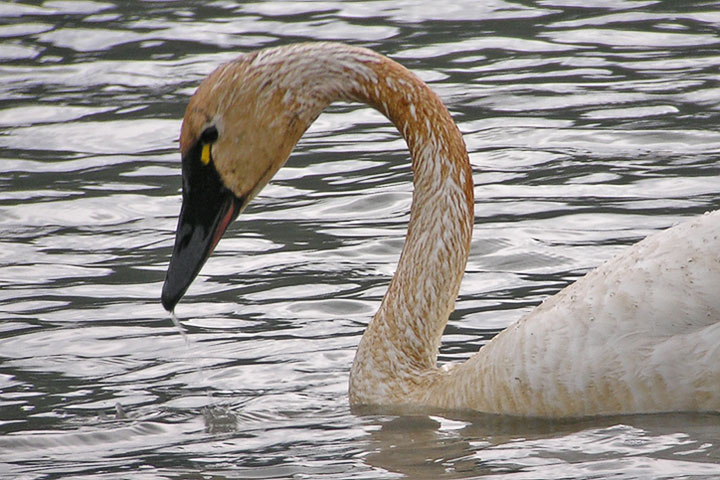 This swan shows a number of features which distinguish it as a Tundra Swan: its delicate bill, the yellow lore spot, and the rounded crest of its head.
This swan shows a number of features which distinguish it as a Tundra Swan: its delicate bill, the yellow lore spot, and the rounded crest of its head.
The rust colour on its neck is not distinctive. Any swan may acquire this from feeding in iron–rich sediment.
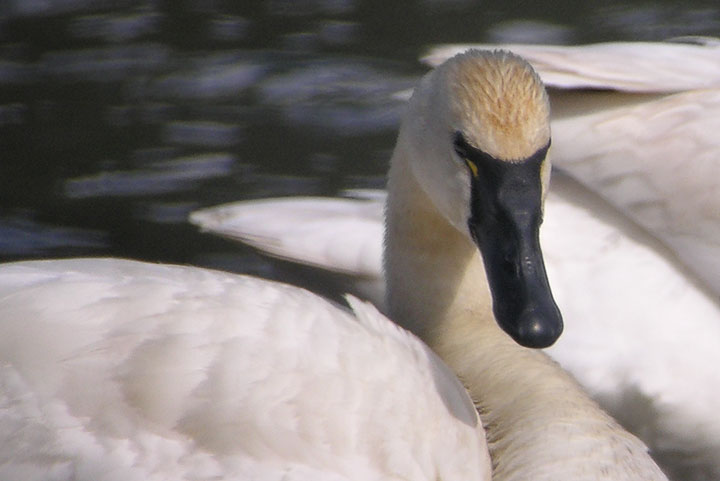 Another distinguishing characteristic of the Tundra Swan is the line joining the beak to the forehead—it is U shaped. On the Trumpeter Swan it is V shaped.
Another distinguishing characteristic of the Tundra Swan is the line joining the beak to the forehead—it is U shaped. On the Trumpeter Swan it is V shaped.
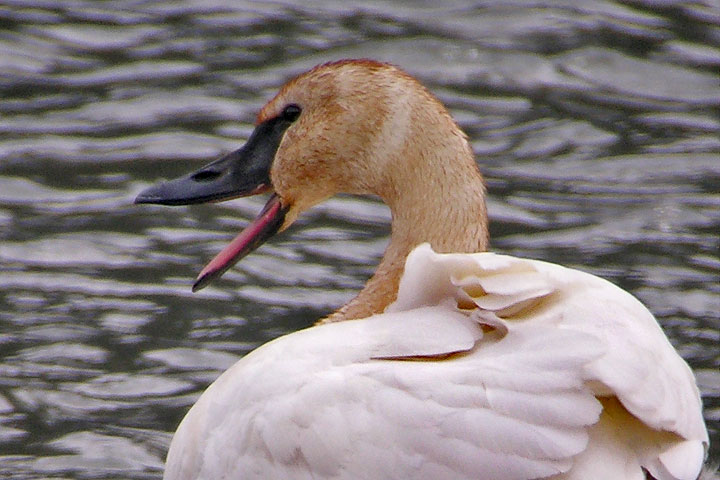 With its beak open, this Tundra Swan shows its grin line—the reddish band on the upper edge of the lower mandible. A Trumpeter Swan has the same feature. Although this swan doesn’t display the yellow lore spot, it does have the smoothly rounded head characteristic of a Tundra.
With its beak open, this Tundra Swan shows its grin line—the reddish band on the upper edge of the lower mandible. A Trumpeter Swan has the same feature. Although this swan doesn’t display the yellow lore spot, it does have the smoothly rounded head characteristic of a Tundra.
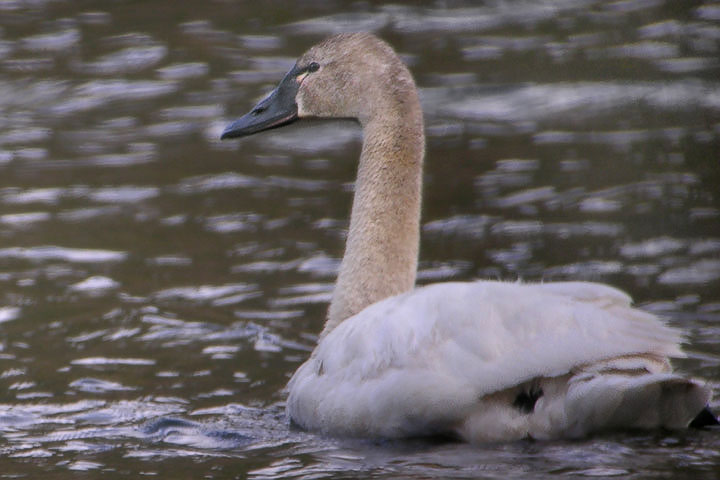 The grey neck of this Tundra Swans reveals it to be a juvenile.
The grey neck of this Tundra Swans reveals it to be a juvenile.
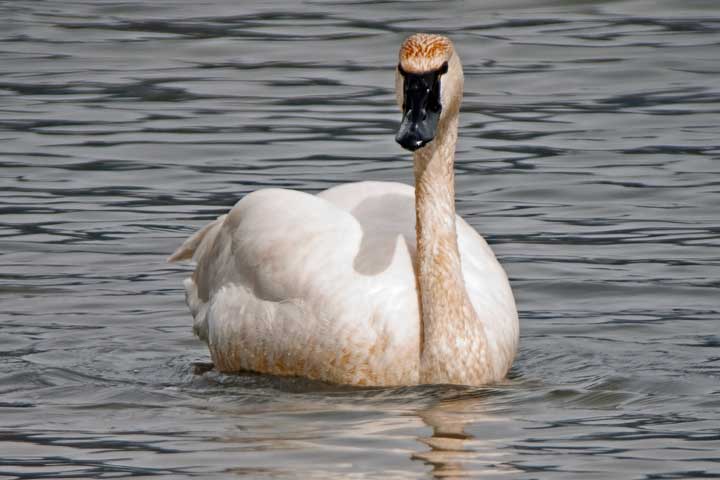 A front and side view of the same Tundra Swan.
A front and side view of the same Tundra Swan.
 A front and side view of the same Tundra Swan.
A front and side view of the same Tundra Swan.
 Two Tundra Swans visit the Lake during April showers.
Two Tundra Swans visit the Lake during April showers.
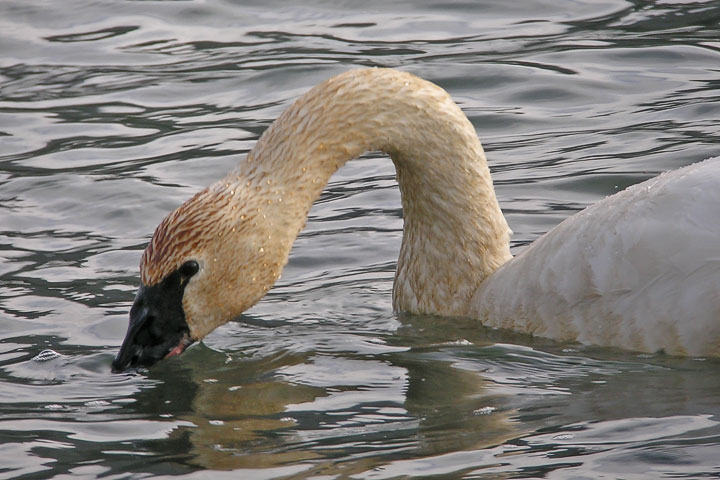 A Tundra Swan with a barely discernible yellow lore dabbles.
A Tundra Swan with a barely discernible yellow lore dabbles.
Information from Wikipedia: Tundra Swan.
![]()